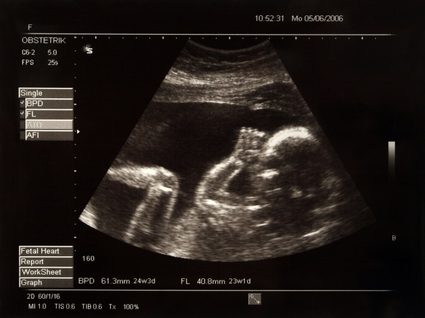Due Date Calculator
- Pregnancy due date 👶
- Estimated due date
- What is a "due month"?
- How to calculate the due date?
- LMP - what is it?
- Naegele's rule
- What is a conception date?
- Conception date method
- Calculate the due date
- When is my due date?
- How long is a pregnancy?
- Pregnancy trimesters
- Premature birth
- Gestational age
- When should I schedule the first medical examination?
- The tests you can expect at the first doctor appointment
The due date calculator (also known as pregnancy calculator) helps moms-to-be to answer the exciting question: when is my due date? With our tool, you will easily estimate the due date of your baby. In the article below, you will read about the pregnancy due date and find out how to calculate the due date using different calculation methods (Naegele's rule and conception date. Learn how to calculate the date of conception with our conception calculator). You'll also discover more about pregnancy trimesters, premature birth, and how long pregnancy is and find explanations of the terms"LMP", "due month," and "gestational age".
Keep reading to learn how to use our due date predictor and find out your baby's birthday!

With our calculators, you can also easily know your baby's blood type covered with our blood type calculator and his future height covered with our height calculator.
We try our best to make our Omni Calculators as precise and reliable as possible. However, this tool can never replace a professional doctor's assessment. If any health condition bothers you, consult a physician.
Pregnancy due date 👶
Being pregnant is probably one of the most memorable periods of your entire life. Do you remember the moment you noticed some changes in your body? Or maybe your period was late? Then the doctor confirmed the happy news by ultrasound and hCG levels testing. Learn more about human Chorionic Gonadotropin with our hcg levels calculator.
Preparing for the baby is extremely exciting, both for happy parents and their family and friends. The time that the fetus grows in its mom’s uterus is widely known to be 280 days or around nine months. This rough approximation covers the whole span between the last menstrual period and birth. Besides pure curiosity, there are many reasons why it’s worth knowing the foreseen delivery date.
Many decisions are based on estimating the approximate baby's due date. For instance - whether to do additional examinations, induce labor, or to prepare for maternity leave. However, the estimated date of delivery is never entirely accurate.
Estimated due date
An estimated due date (EDD) is a term used to predict the most likely day when labor may occur. Many various and often interdependent factors influence the length of a pregnancy, so the date is only an estimation. . Taking that into consideration, it is not possible to define the exact day of childbirth with 100% certainty.

What is a "due month"?
Due month is a term that helps moms reduce stress and fear of going past the due date. Considering that the real percentage of babies born precisely in the anticipated due date is low, it’s unrealistic to expect the calculated due date of your baby to be accurate. The term "due month" stands for a time frame when a baby can be expected in a proper gestation. Without complications, a baby is usually born between weeks 37 and 42. About 80% of babies come in the timespan within two weeks before or after the expected due date.
To determine your due month, we subtract or add two weeks to the estimated due date.
due month = due date ± 2 weeks
How to calculate the due date?
There are a few scientifically proven methods to estimate the pregnancy's due date. Some are simple in theory; others are a bit more complicated.
Keep in mind that all methods only provide predictions. Also, remember that your due date can change. There is no cause for concern; your doctor may change the due date for many reasons as your pregnancy progresses (because of irregular periods, abnormal fundal height, or abnormal levels of alpha-fetoprotein - a protein produced by the baby).
The due date of your baby can be defined using the following methods:
- The Naegele's rule (based on the first day of your last period);
- The exact date you conceived;
- Mittendorf-Williams rule;
- Doppler ultrasonography;
- Pregnancy milestones; and
- Fundal height.
The due date calculator provided to you by Omni uses the first two methods (select them from the calculator's list) - the first day of your last period (based on Naegele's rule) and the date of conception.
LMP - what is it?
LMP is an abbreviation of the term “last menstrual period”. By convention, pregnancies are dated in weeks, starting from the first day of a woman's last menstrual period. The LMP refers to the first day (onset of bleeding) of your last menstrual period before becoming pregnant. Our calculator uses this data to calculate the due date. Following this way of counting, a woman is considered six weeks pregnant only two weeks after her first missed period.
Naegele's rule
Naegele's rule - also known as “the first day of LMP method” adds 280 days (40 weeks) to the first day of your last menstrual period:
due date = first day of LMP + 280 days.
It is used in most pregnancy wheels. The LMP method assumes regular 28-day cycles and that ovulation and conception occur precisely on the 14th day of the cycle. Its accuracy depends on the mother's LMP first-day recall and cycle length. Moreover, some women experience light bleeding at the beginning of the pregnancy, which is around the time when they would normally have their period. As a result, they may have been pregnant a few weeks earlier than they realize. Periods aren't always precisely four weeks apart. When the cycle is longer, the baby may be conceived a little later after the period than assumed in the calculations. When it's shorter, the conception can happen earlier than estimated.
What is a conception date?
The date of conception is a day when successful fertilization occurs. It happens when a sperm connects with an egg (fusion of gametes). From that moment, a zygote grows and divides fast, forming a new organism. Women who track their ovulation carefully may know their exact day of conception, but it can be quite tricky for the rest of the moms to specify when they conceived. If a woman's menstrual periods are regular and ovulation occurs on day 14 of her cycle, conception takes place about two weeks after her LMP. After unprotected intercourse, sperm can live inside the vagina for up to five days, and an egg can live up to 24 hours after its release. That gives a 6-day-timespan of possibility to become pregnant in every cycle. For example, if you had intercourse on Saturday, you may become pregnant till Thursday.

Conception date method
If you know the exact date of conception, try to use the second calculation method in the due date calculator. Our due date predictor will add 266 days (38 weeks) to the entered date. This method may give you a more reliable result than the LMP method, especially when your cycles are irregular or significantly longer or shorter than 28 days.
due date = date of conception + 266 days
Calculate the due date
How to use the Omni pregnancy calculator and see when my due date is? Running our due date predictor is child's play. Let's see it in 4 steps:
- Choose between the methods -
first day of LMP/conception date. - Enter the relevant dates (based on the chosen method).
- Set your average cycle duration (in days) - it is optional and applies only to the "LMP" method.
- Read the calculated birth due date and the current week of your pregnancy😊
- See the time span for your due month.
- Check what percentage of your pregnancy is already completed.
- Find out how many days are still left to the delivery date.
- Get to know what screening tests you should do in each trimester (and when to perform them).
When is my due date?
Check the example of calculation for our friend Kate to be sure that you understand how the due date calculator works and use it properly.
I. The first day of the LMP method:
Let’s assume that the first day of Kate's last period was July 25, 2018. Her average cycle duration is 30 days. That gives:
July 25, 2018 + 280 days + 2 days = May 03, 2019
The due month is defined accordingly:
beginning of due month = May 03, 2019 - 14 days = April 19, 2019
end of due month = May 03, 2019 + 14 days = May 17, 2019
II. Conception day method:
Let's suppose that Kate knows the exact day she conceived, and it was August 10, 2018. That gives:
August 10, 2018 + 266 days = May 03, 2019
The due month is defined accordingly:
beginning of due month = May 03, 2019 - 14 days = April 19, 2019
end of due month = May 03, 2019 + 14 days = May 17, 2019
Time goes by pretty quickly - in the blink of an eye, she'll choose the kindergarten, make some preparations for school, and see her baby grow up.
How long is a pregnancy?
The length of healthy pregnancies is between 37 and 42 weeks. There is a 5-week time span when a baby may arrive and would be considered as born in term. Once the child is delivered, medical staff assesses its health with an on-site APGAR score.
Babies born before week 37 are considered premature and usually need extra medical care for some time. Factors like the rise in maternal obesity and age may contribute to early births. Childbirth after week 42 is called a prolonged pregnancy and may carry a higher risk of complication.
Multiple pregnancies, like twins and triplets, tend to be born prematurely – the higher number of babies, the earlier they are usually born. The length of pregnancy may also be influenced by how long it took the embryo to implant after conception. Extended implantation determines longer gestation from implantation to birth. Moreover, tall women tend to have longer pregnancies than shorter women. White European women also tend to have naturally longer pregnancies than African-Caribbean or Asian women.
Pregnancy trimesters

Pregnancy is divided into three trimesters (each lasts three months). The first trimester is from week 1 to week 12 and includes conception (when a sperm fertilizes an egg). During this time span, the possibility of a miscarriage (natural death of an embryo or fetus) or a severe disability is the highest. During this time, your body undergoes many changes triggered by hormones. These changes affect every organ system in your body, and their symptoms may even occur in the first weeks of pregnancy. Your emotions might range from excitement to anxiety. Your period stopped - that is a clear sign that you are pregnant. The changes may include the following:
- Mood swings;
- Tiredness;
- Tender, swollen breasts;
- Headache;
- Weight gain or loss;
- Need to pass urine more often; and
- Constipation.
According to the American College of Obstetricians and Gynecologists (ACOG), the baby's heart and lungs begin to develop during the first month of pregnancy. At the same time, its arms, legs, brain, spinal cord, and nerves start to form.
The second trimester lasts from weeks 13 through 28. Most women perceive this trimester as much better than the first one. Some of the symptoms, like nausea and fatigue, are going away. New noticeable changes to your body are now happening. Your abdomen is still growing according to your baby, and before the trimester ends, you will start feeling your baby's movements! Here are some of the symptoms that you may notice during this period:
- Darkening of the skin around your nipples;
- Body aches (back, abdomen, groins, thighs);
- Stretch marks on abdomen, breasts, and thighs;
- A line on the skin going from the belly button to the pubic hairline; and
- Numb or tingling hands.
The fetus grows further in the second trimester (about 3-5 inches long). The arms and legs can bend, kidneys start working and produce urine. Baby can hear and swallow. Its eyebrows, fingernails, and neck begin to form. The skin has a wrinkled appearance. At week 28, more than 90% of babies can survive outside the uterus if high-quality medical care is available. The loss of a pregnancy at this stage is called a stillbirth. To learn more about your risk factor for stillbirth, check our stillbirth risk calculator.
The third and last trimester continues from week 29 to delivery (which happens around week 40). Some of the discomforts from the previous trimester will still be present. Moreover, many women have breathing difficulties and have to visit the bathroom more often. This is because the baby is getting bigger, putting more pressure on the mother's organs. Those feelings may be unpleasant, but don't worry. They will go away after birth.
During the last trimester, you may find out some new body changes:
- Shortness of breath;
- Trouble sleeping;
- Tender breasts (some of the water pre-milk, colostrum, may leak out);
- Bellybutton sticking out;
- Heartburn; and
- Contractions (they may be a sign of real or false labor).
By the seventh month of pregnancy, the baby kicks and stretches. It can even respond to light and sound. Eyes can open and close. In the next month, the fetus gains weight very quickly; different regions of the brain are forming. In the ninth month, the baby is getting ready for birth by turning to a head-down position in a woman's pelvis. The lungs are fully developed and prepared for functioning autonomously from the mother. The weight increases significantly.
As your due date is closer, your cervix becomes thinner and softer. It's a natural process that helps the birth canal to open during the birth process. The final countdown has started...!

Premature birth
The cause of premature birth is often not specified. However, there are known risk factors for premature delivery, including:
- Having a previous premature birth;
- Multiple pregnancies (twins, triplets, other multiples);
- Less than six months of the interval between pregnancies;
- Conceiving through in vitro fertilization;
- Smoking cigarettes;
- Some infections (particularly genital);
- Chronic disorders like high blood pressure or diabetes;
- Being underweight or overweight before pregnancy;
- Stressful life situations;
- Multiple miscarriages or abortions; and
- Physical injury or trauma.
The following tables show the median value of birth: weight, length, and head circumference of premature babies in different gestational ages (for both boys & girls).
For boys ♂:
Gestational age | Weight [lbs/kg] | Length [in/cm] | Head circumference [in/cm] |
|---|---|---|---|
40 weeks | 7 / 3.6 | 20 / 51 | 13.8 / 35 |
35 weeks | 5 / 2.5 | 18.1 / 46 | 12.6 / 32 |
32 weeks | 3 / 1.8 | 16,5 / 42 | 11.6 / 29.5 |
28 weeks | 2 / 1.1 | 14.4 / 36.5 | 10.2 / 26 |
24 weeks | 1 / 0.65 | 12.2 / 31 | 8.7 / 22 |
For girls ♀:
Gestational age | Weight [lbs/kg] | Length [in/cm] | Head circumference [in/cm] |
|---|---|---|---|
40 weeks | 7 / 3.4 | 20 / 51 | 13.8 / 35 |
35 weeks | 5 / 2.4 | 17.7 / 45 | 12.4 / 31.5 |
32 weeks | 3 / 1.7 | 16,5 / 42 | 11.4 / 29 |
28 weeks | 2 / 1.0 | 14.1 / 36 | 9.8 / 25 |
24 weeks | 1 / 0.60 | 12.6 / 32 | 8.3 / 21 |
Gestational age
Gestation is the period between conception and birth. The baby grows and develops inside its mother's womb during this time. Gestational age (GA) describes how far along the pregnancy is. It is measured in weeks, from the first day of a woman's last menstrual cycle to the current date. Therefore, when a baby is conceived (ca. 2 weeks after LMP), it is considered to be already two weeks gestational age.
When should I schedule the first medical examination?
Proper medical care during pregnancy is crucial to ensure the baby is healthy and to control any possible complications. After you realize you are pregnant, you should schedule a first prenatal appointment with your physician. It will typically be longer than future visits. Its purpose is to:
- Determine your due date;
- Find out your health history;
- Explore the medical history of your family members; and
- Determine if you have any pregnancy risk factors.

The tests you can expect at the first doctor appointment
The first visit aims to confirm your pregnancy with a blood test for hCG and to determine your general health. You can expect a general and a pelvic examination, a transvaginal ultrasound, and some lab tests. They are essential to ensure that the pregnancy is going well and the baby is developing correctly. The doctor may prescribe: a urine test, an Rh factor test, a blood panel, glucose level, and tests for HIV, syphilis, hepatitis C, toxoplasmosis, gonorrhea, and rubella.